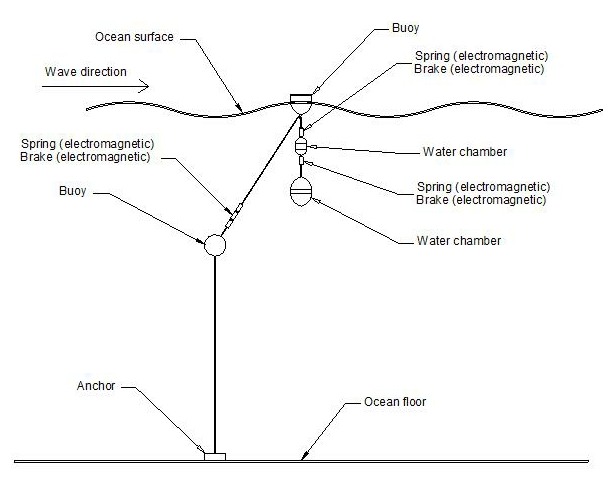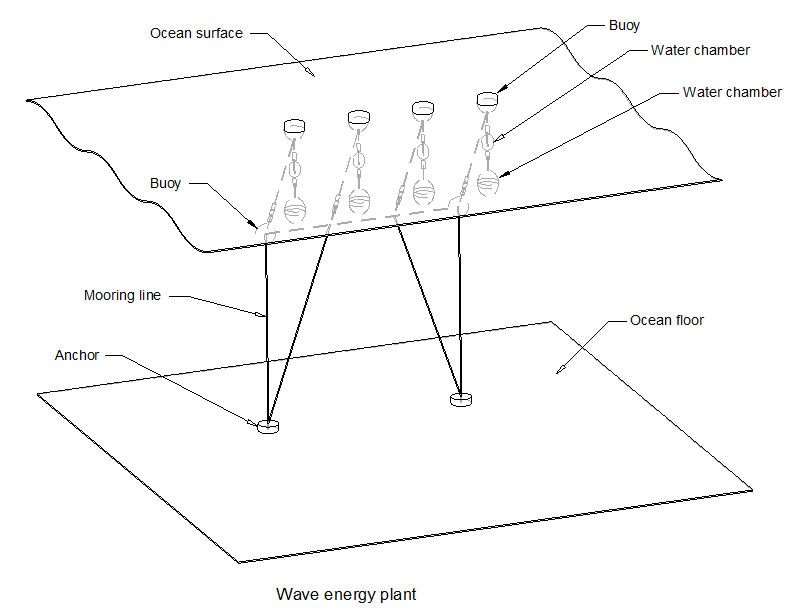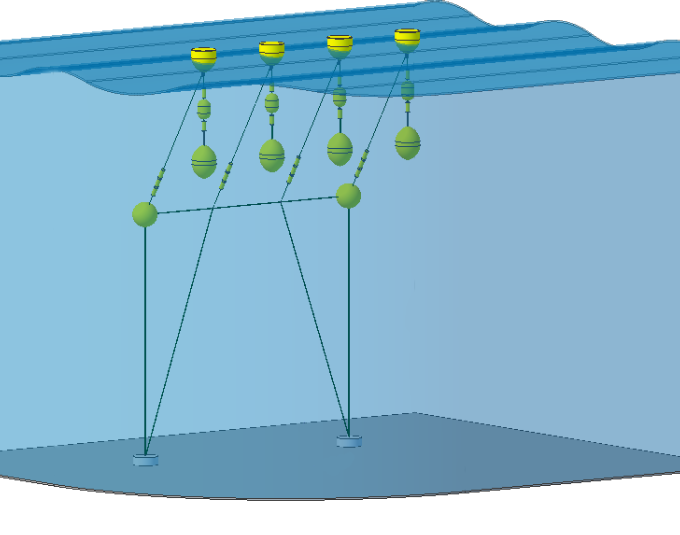A practical method for conversion of ocean wave energy into electrical energy
The method enables practical, efficient and low cost harvesting of ocean energy. For more information please see the following figures and description.

The method includes a spring mass oscillating system consisting of two submerged water chambers connected via springs to a buoy that is floating on the ocean surface. This buoy is in addition connected via springs to a mooring buoy below the ocean surface. The spring mass system has a natural oscillating frequency that is equal to or lower than the frequency of the ocean waves. This will result in transfer of energy from the ocean waves into the spring mass system. The energy is extracted from the system by braking the relative movement between the masses. The brakes use braking forces equivalent to the critical damping forces of the mass spring system and convert the braking forces into electrical energy.

The illustration above shows a power plant consisting of 4 wave energy devices where each surface buoy has a diameter of 3 m. The 4 energy devices are moored to 2 anchors on the ocean floor. Electrical cables (not shown on the drawings) may be mounted along the mooring lines to the sea floor and further to shore. The surface buoys with water chambers and springs are free to rotate around vertical axes when the ocean waves change direction. The distance between the surface buoys may be larger than shown on the drawing.
Estimated amount of produced energy from the power plant:
Wave height 1 meter with wave periode 6 sec: 26,8 kW
Wave height 1,5 meter with wave periode 6,5 sec: 65,6 kW
Wave height 2 meter with wave periode 7 sec: 126,0 kW
Wave height 2,5 meter with wave periode 7,5 sec: 210,8 kW
Wave height 3 meter with wave periode 8 sec: 324,0 kW
Advantages of the method:
– relative low amount of materials to manufacture the power plant
– high efficiency in different wave heights
– ability to resist large wave forces due to flexible mooring of the components and as components are placed
some distance below the surface where the wave forces are smaller
– the number of anchors on the ocean floor is small

Plant for conversion of ocean wave energy into electrical energy